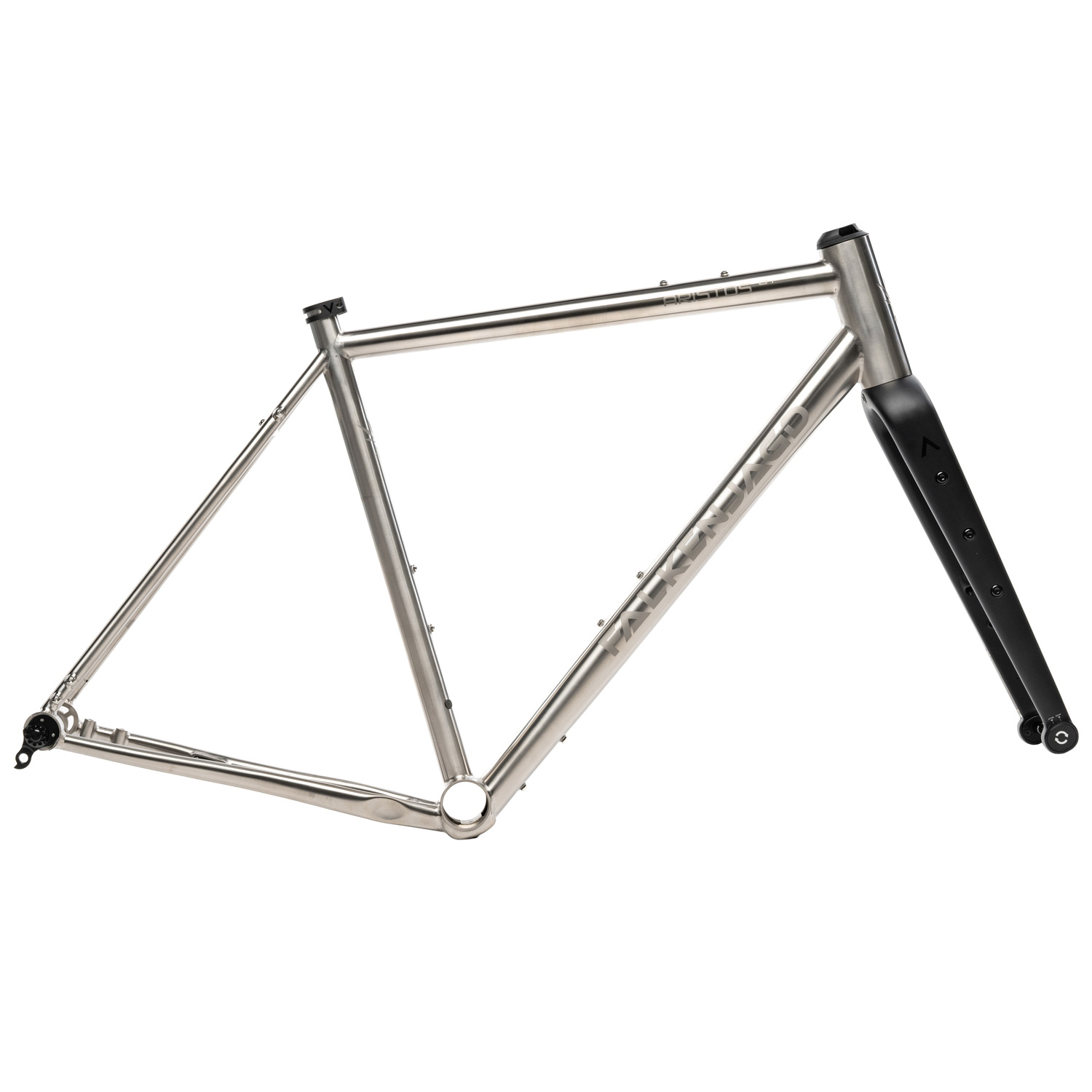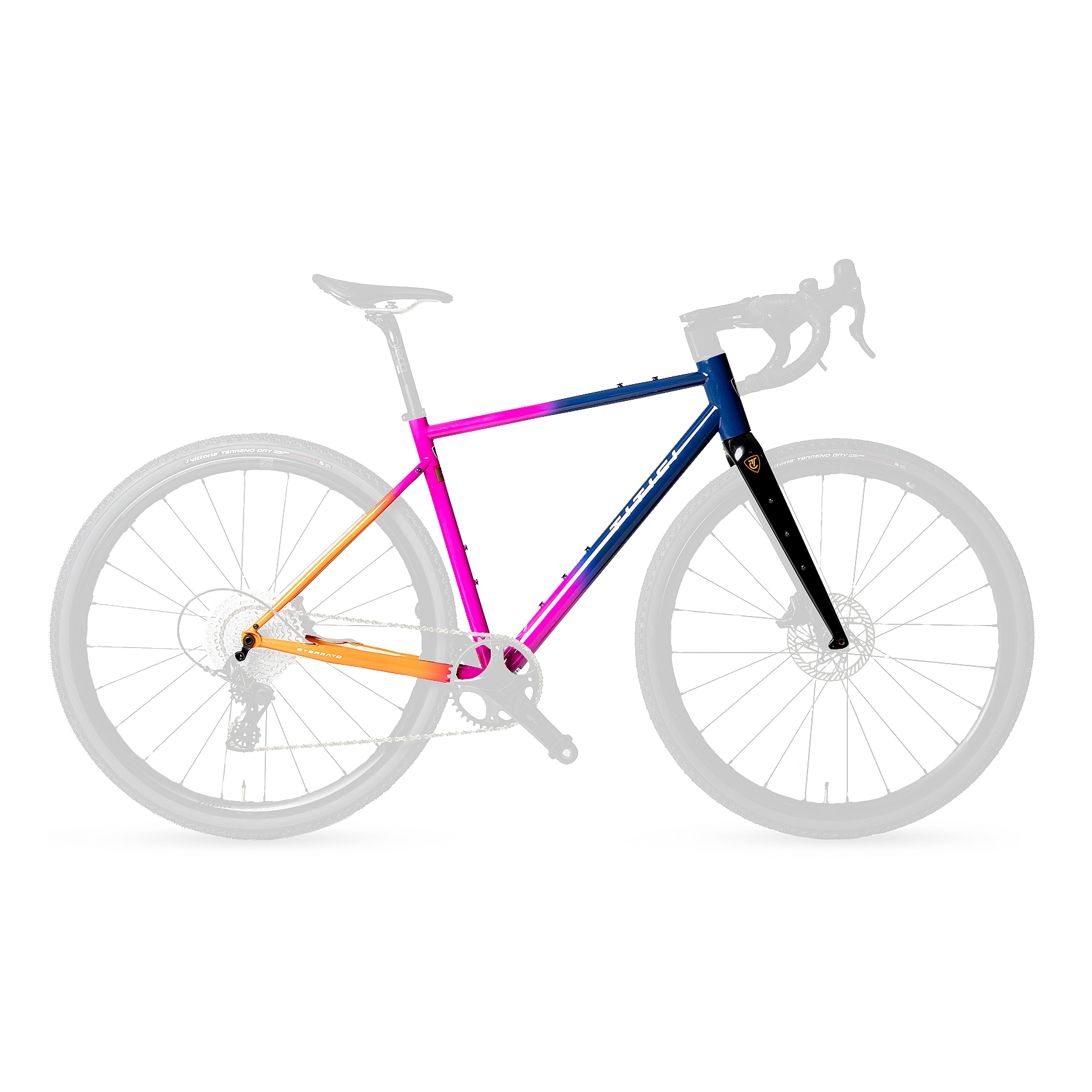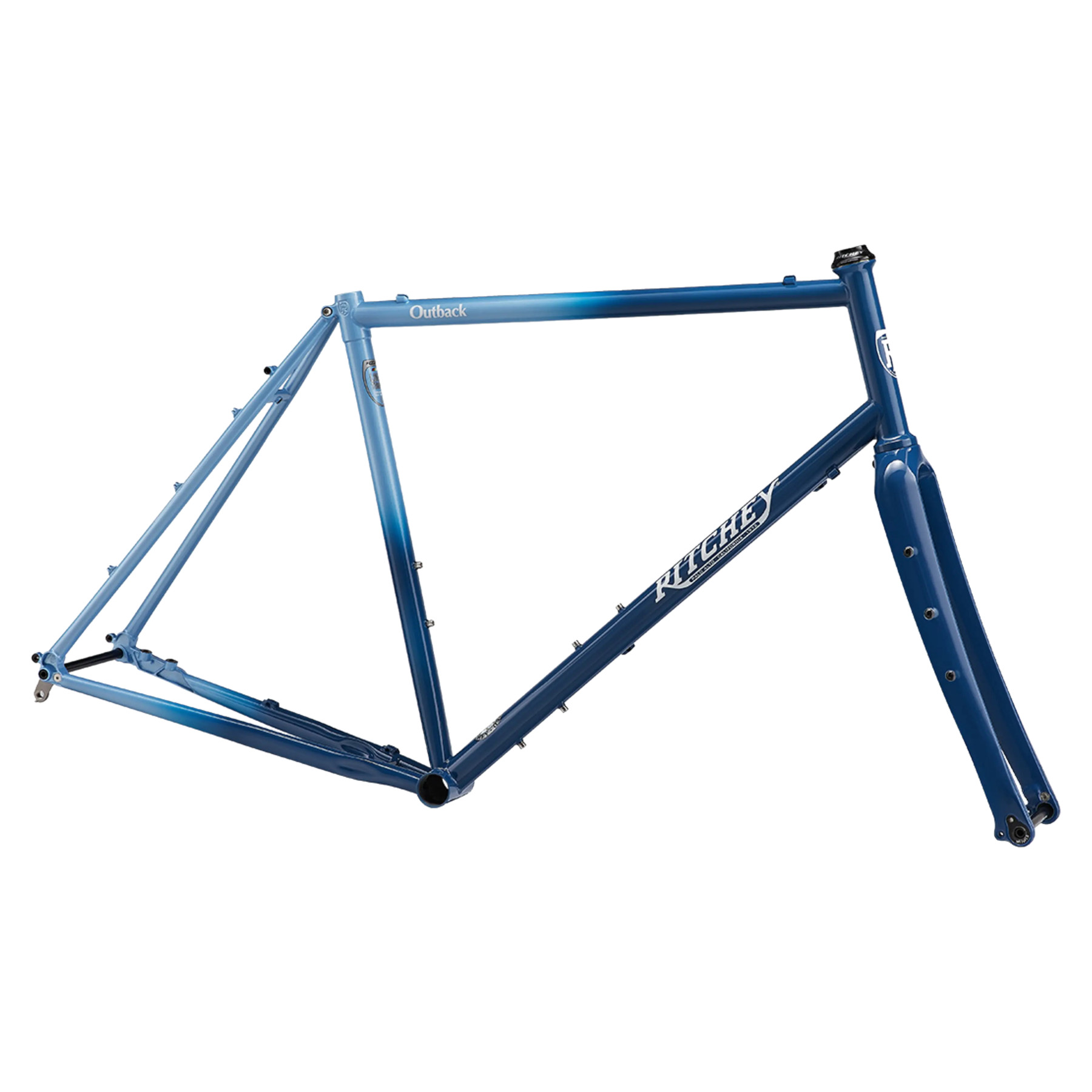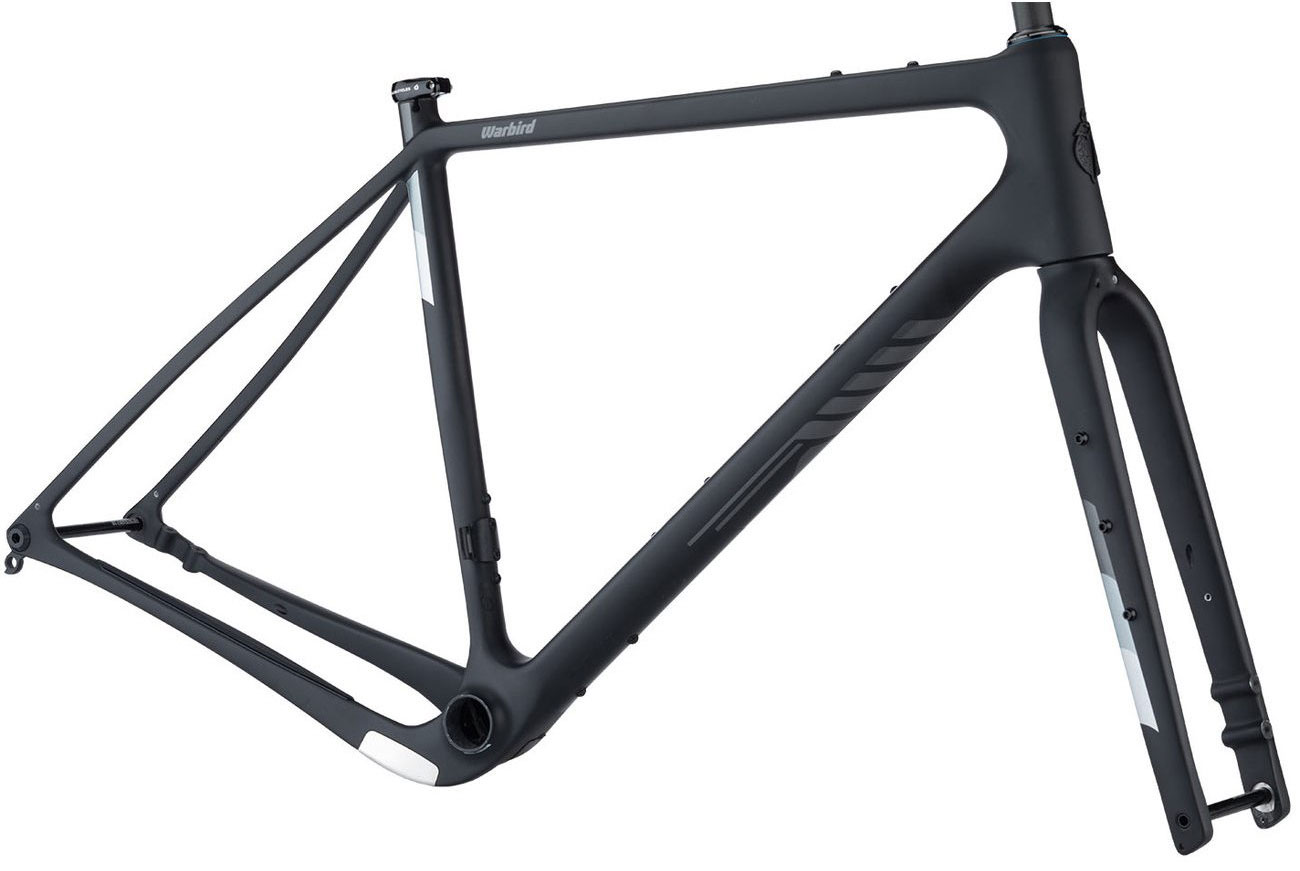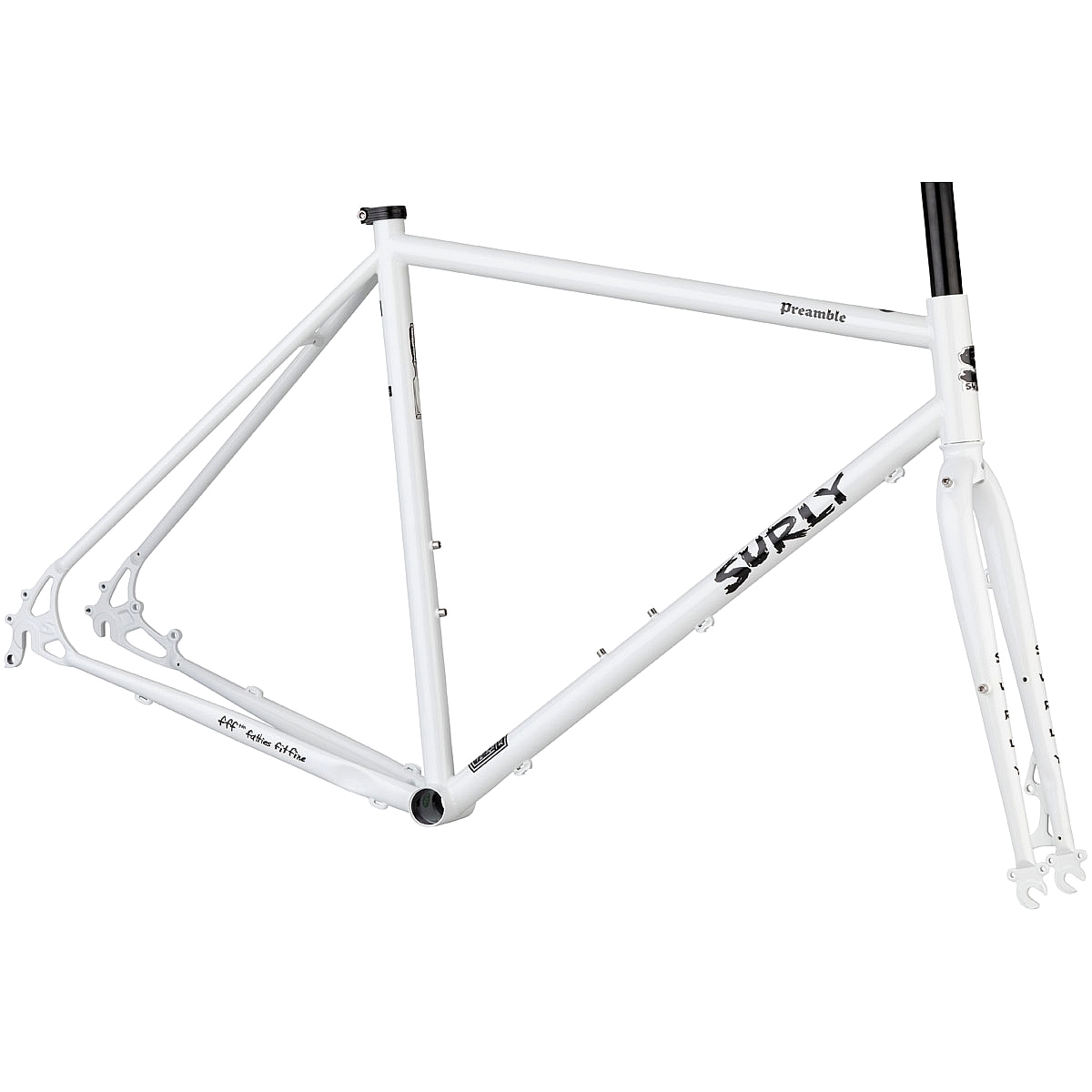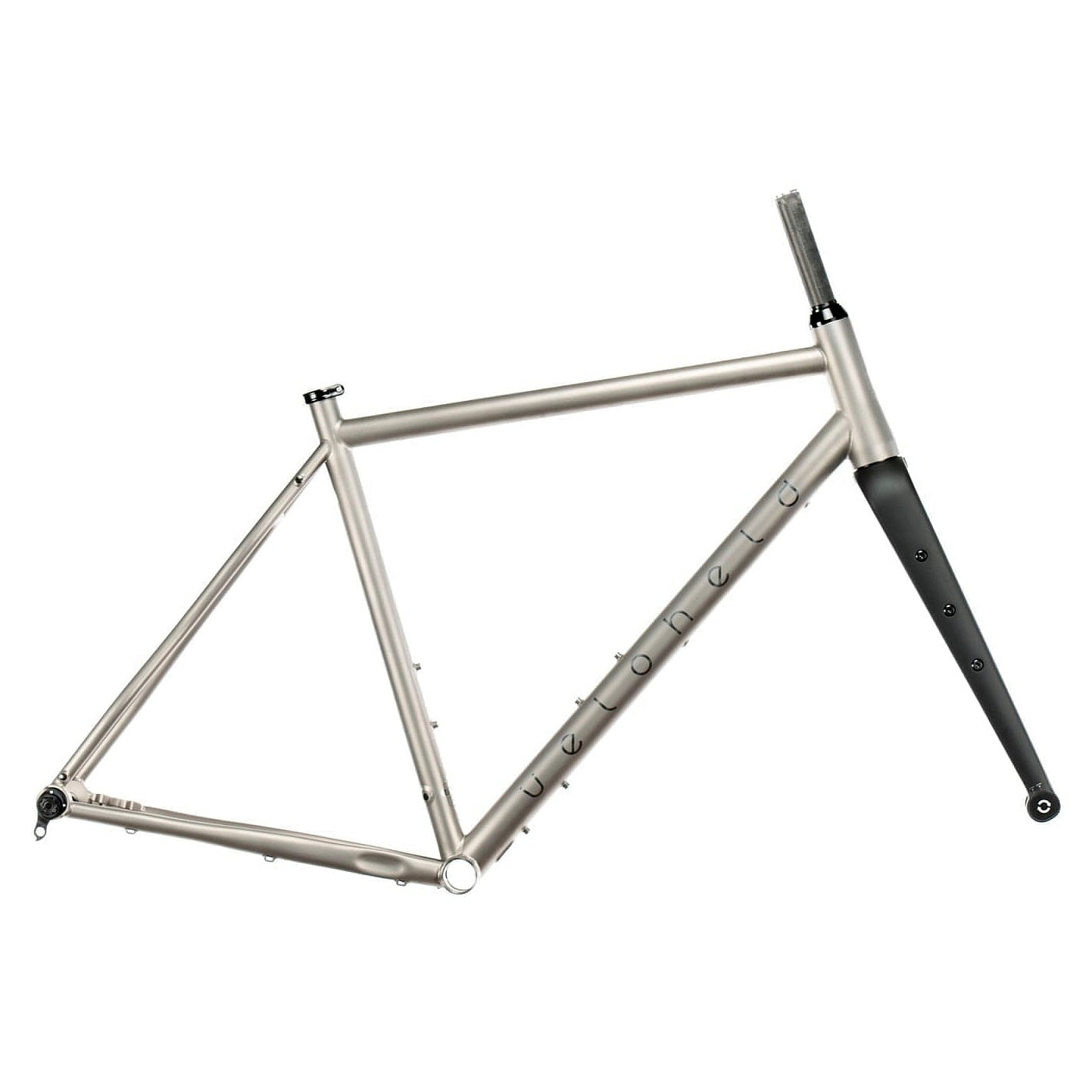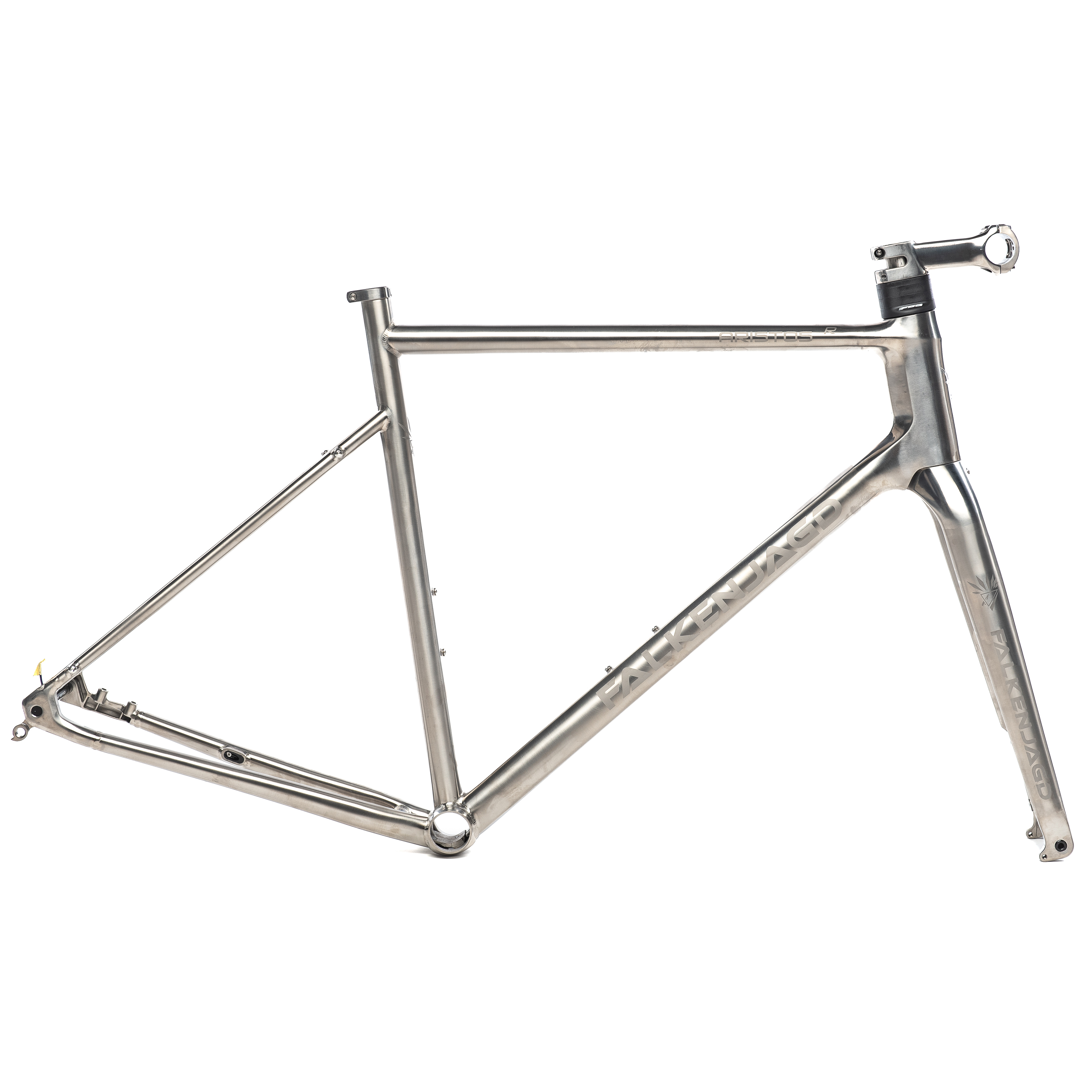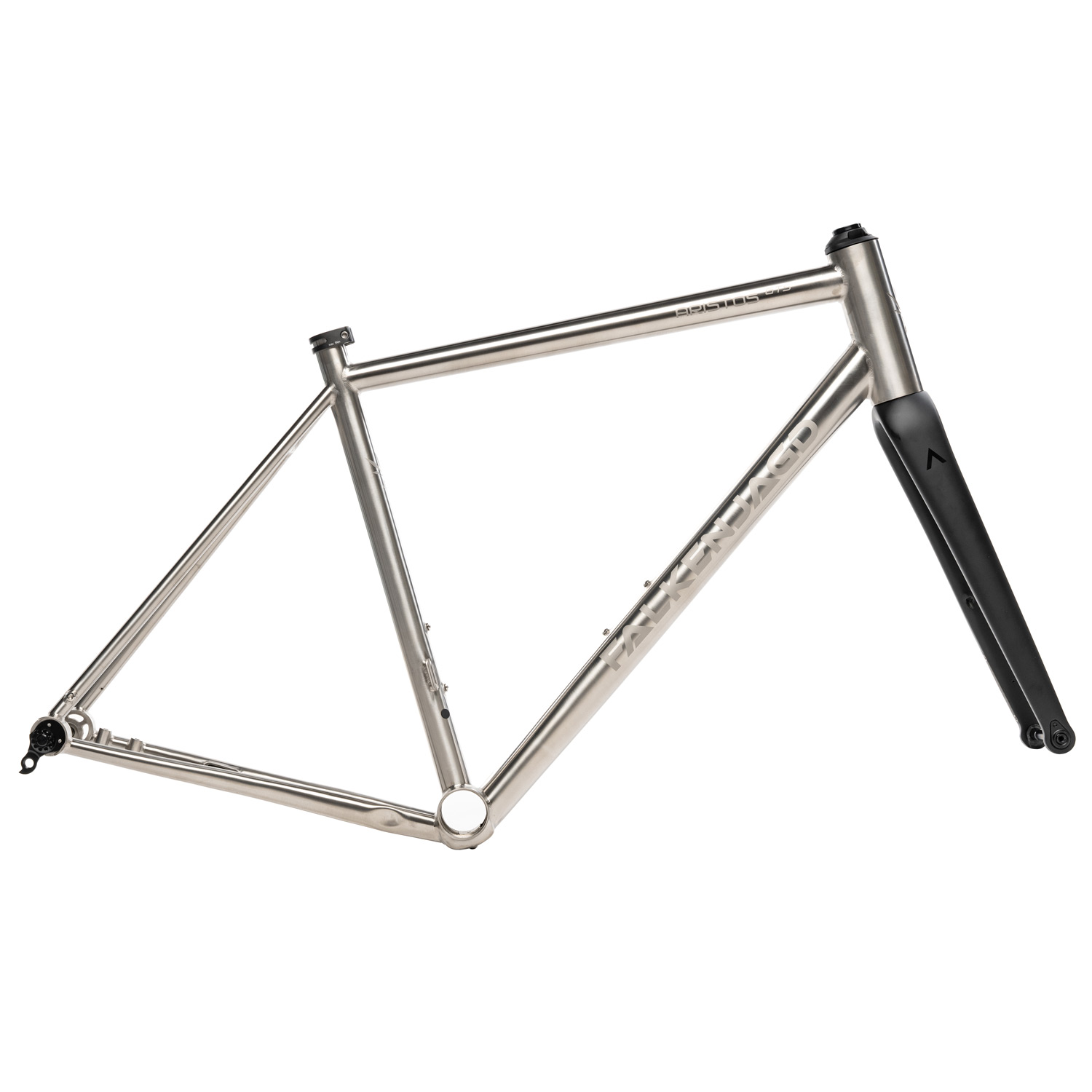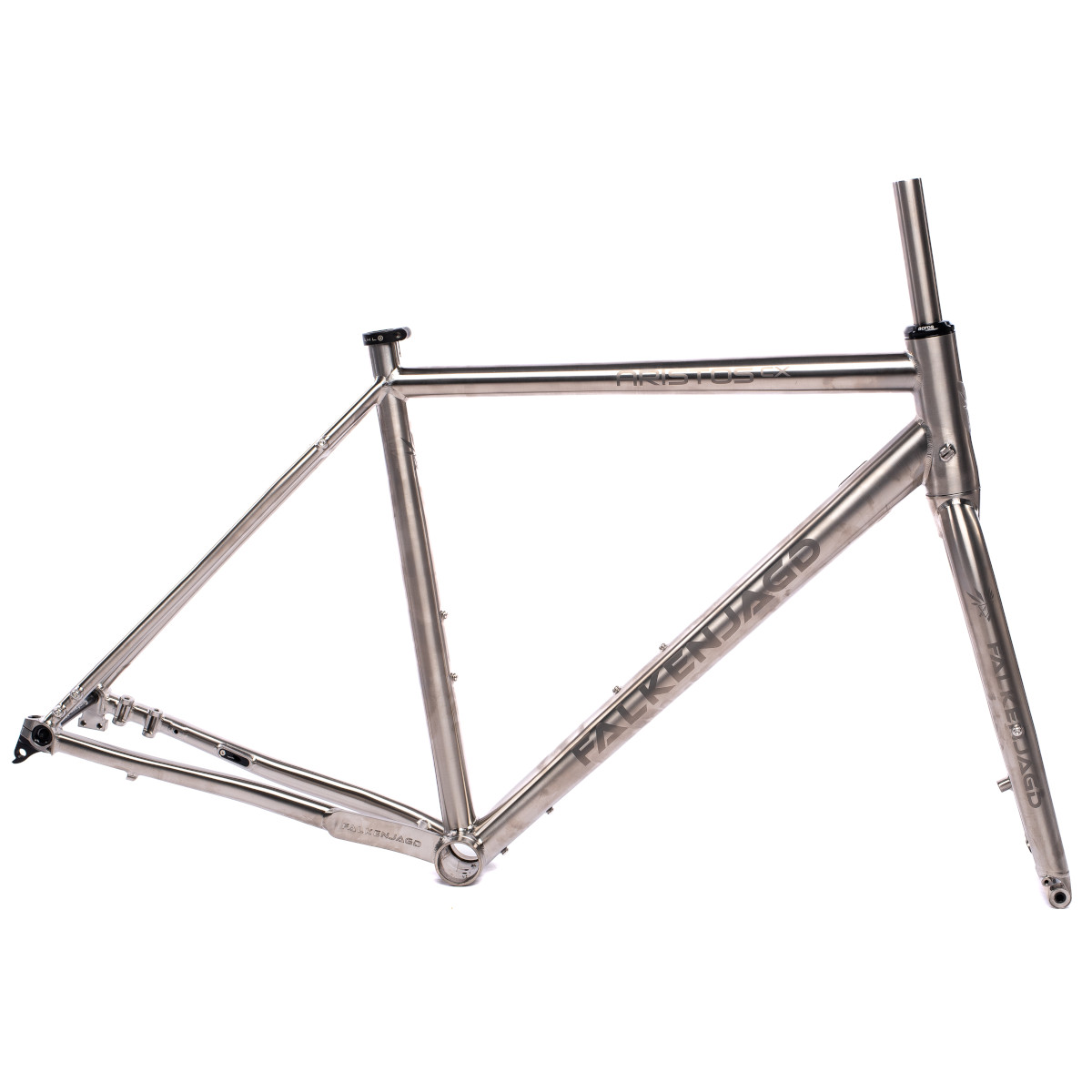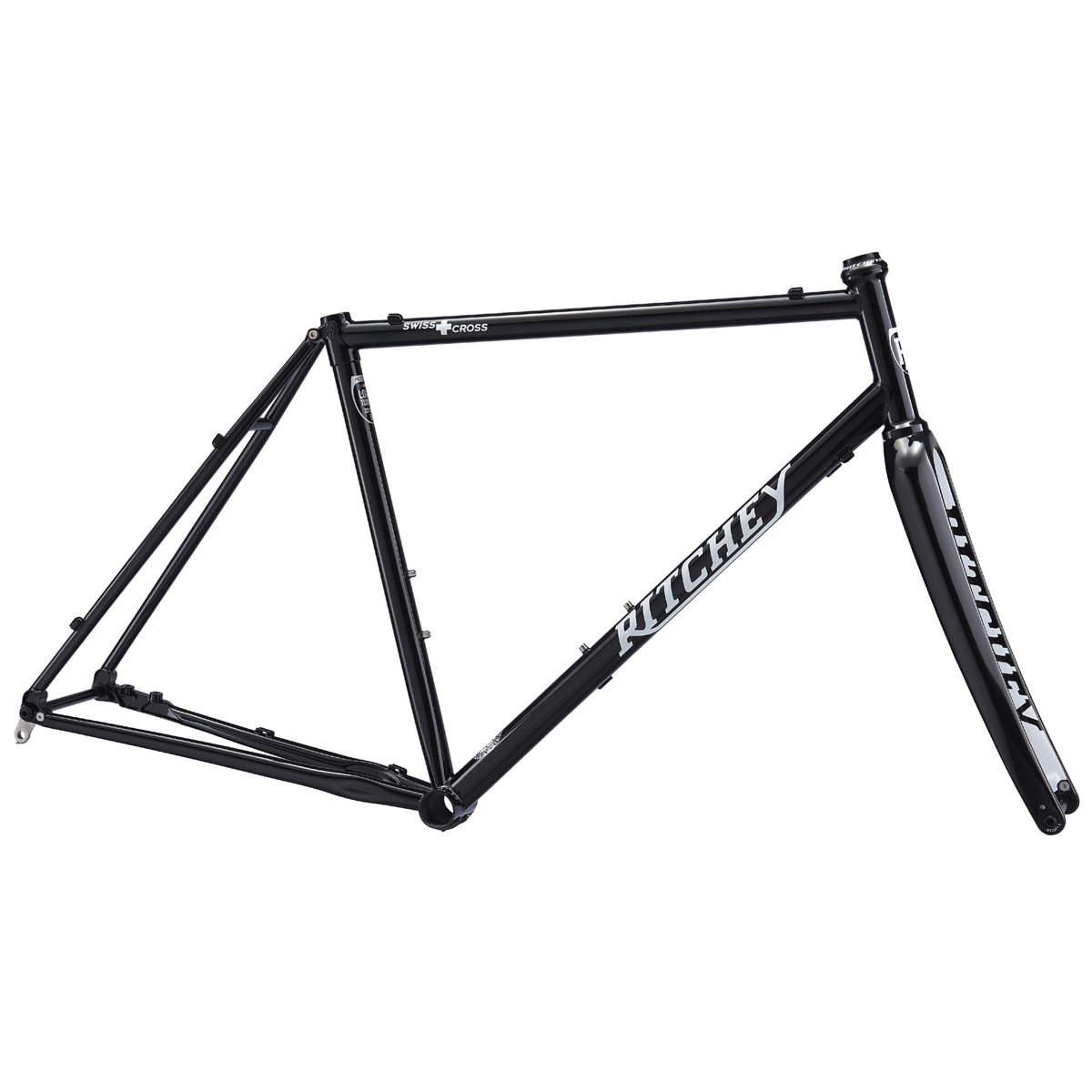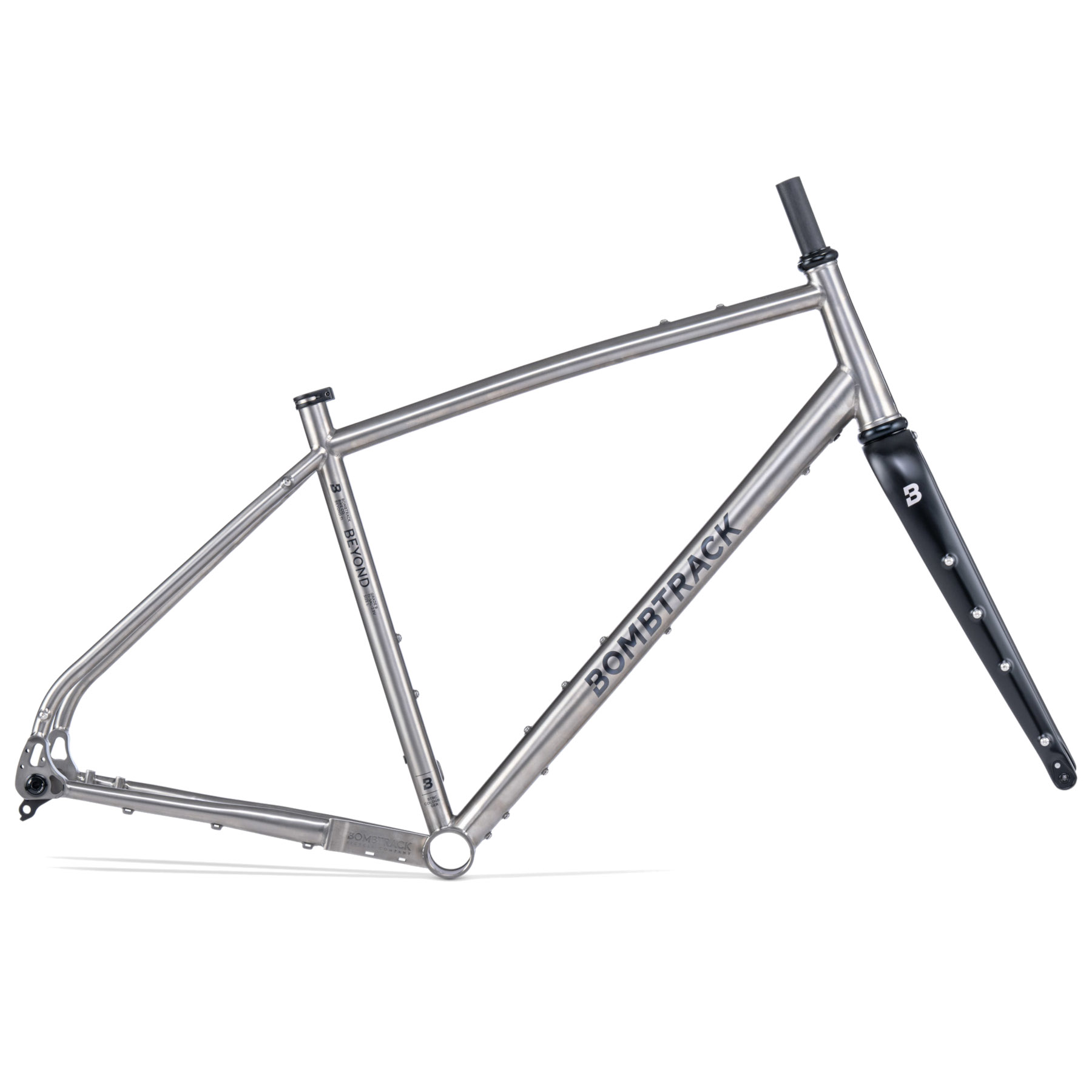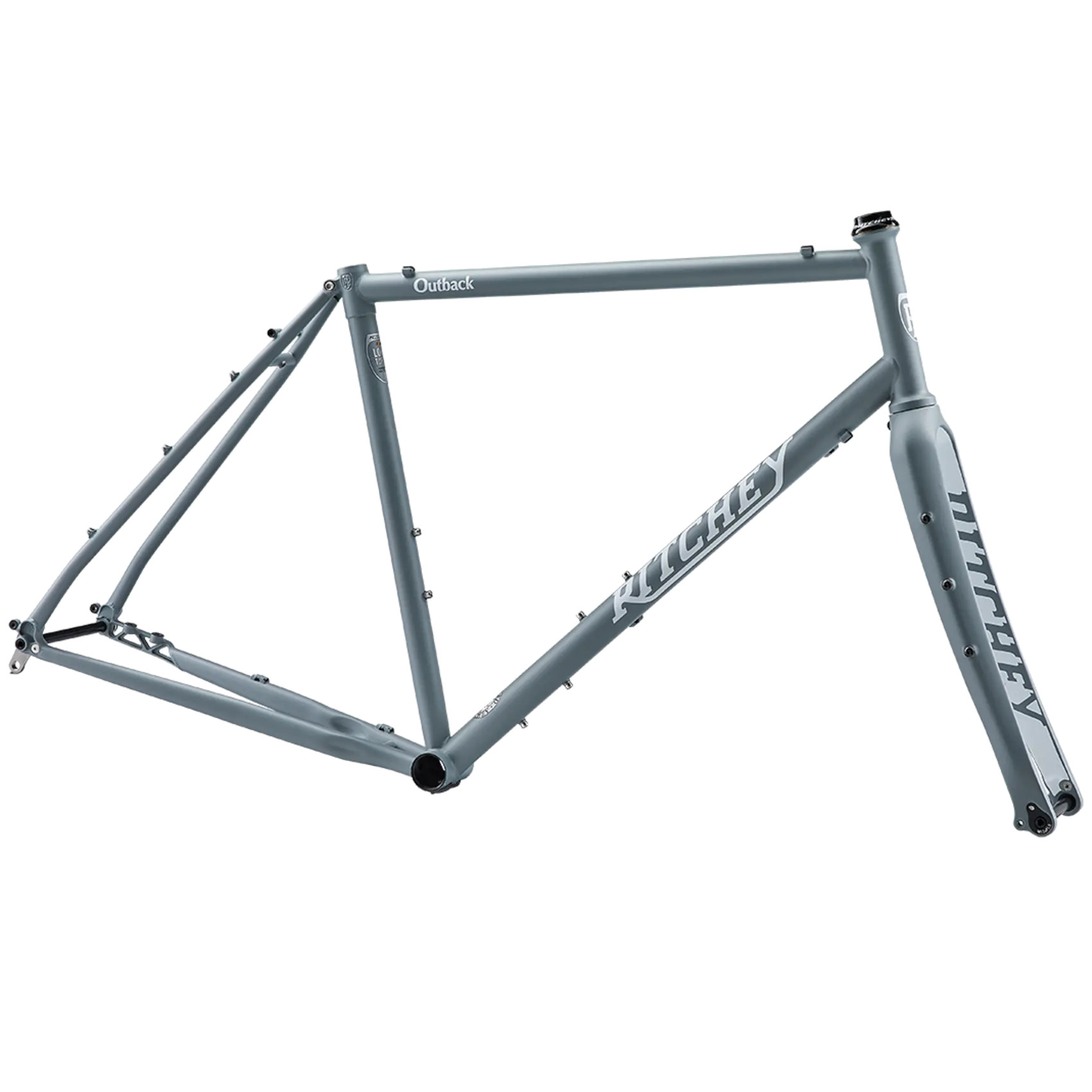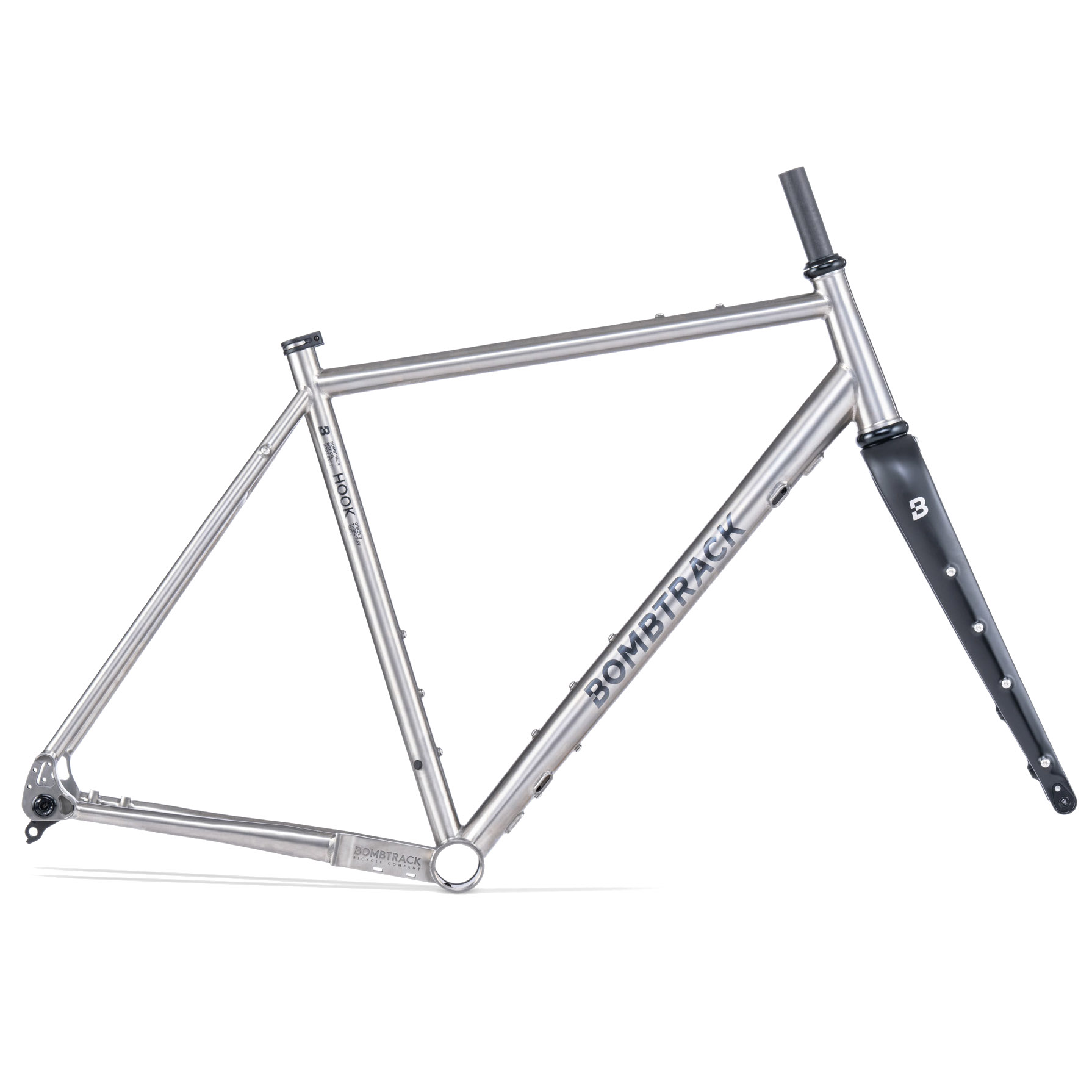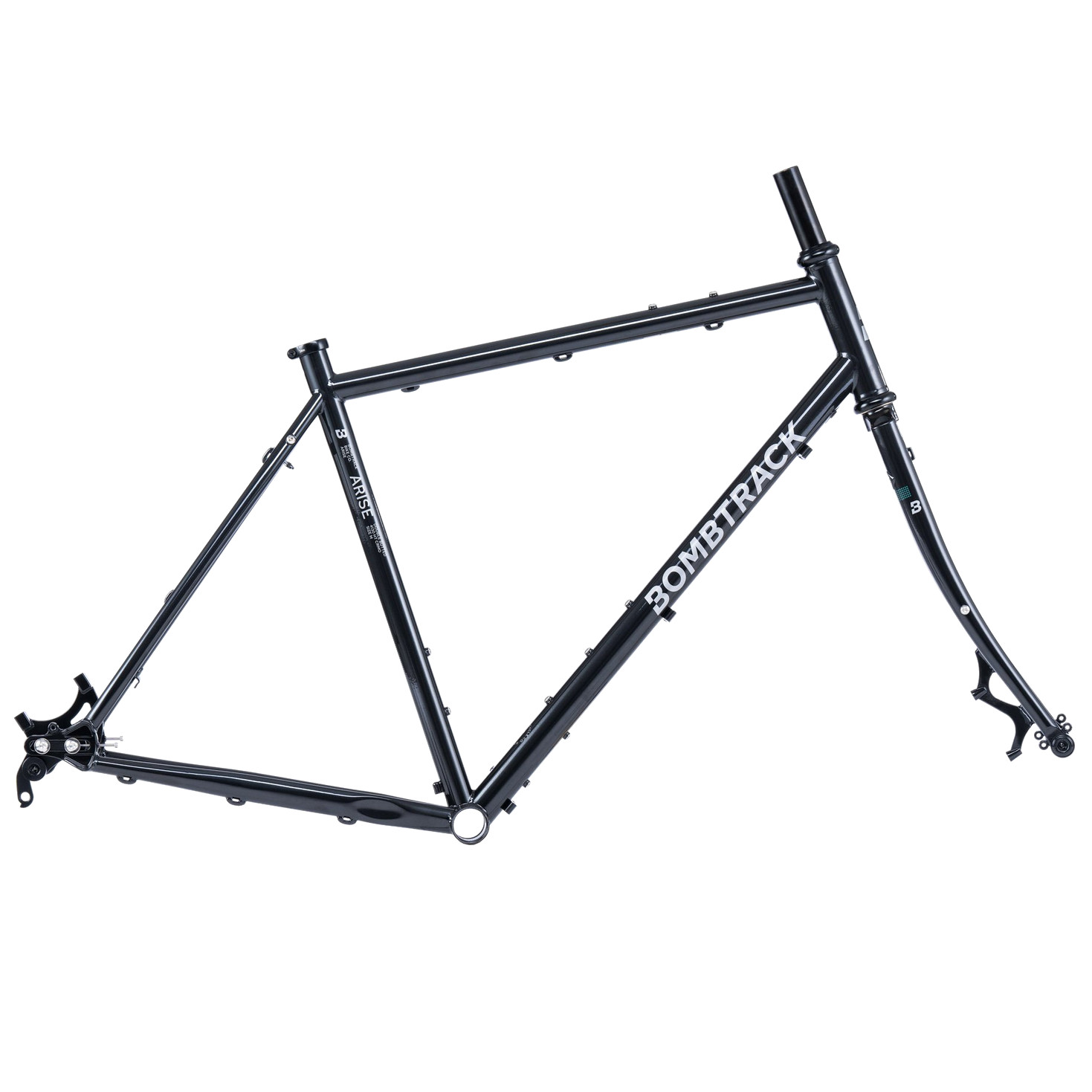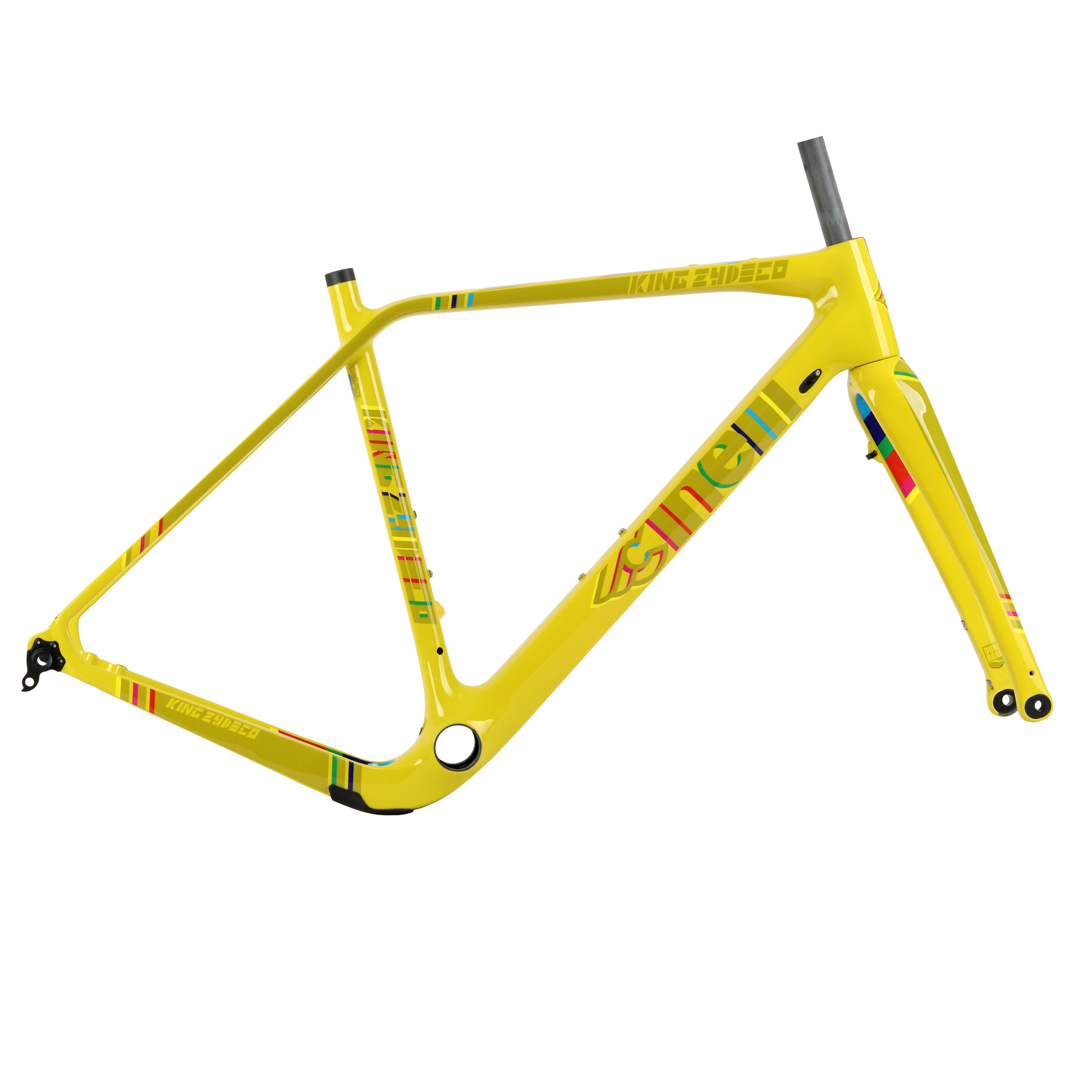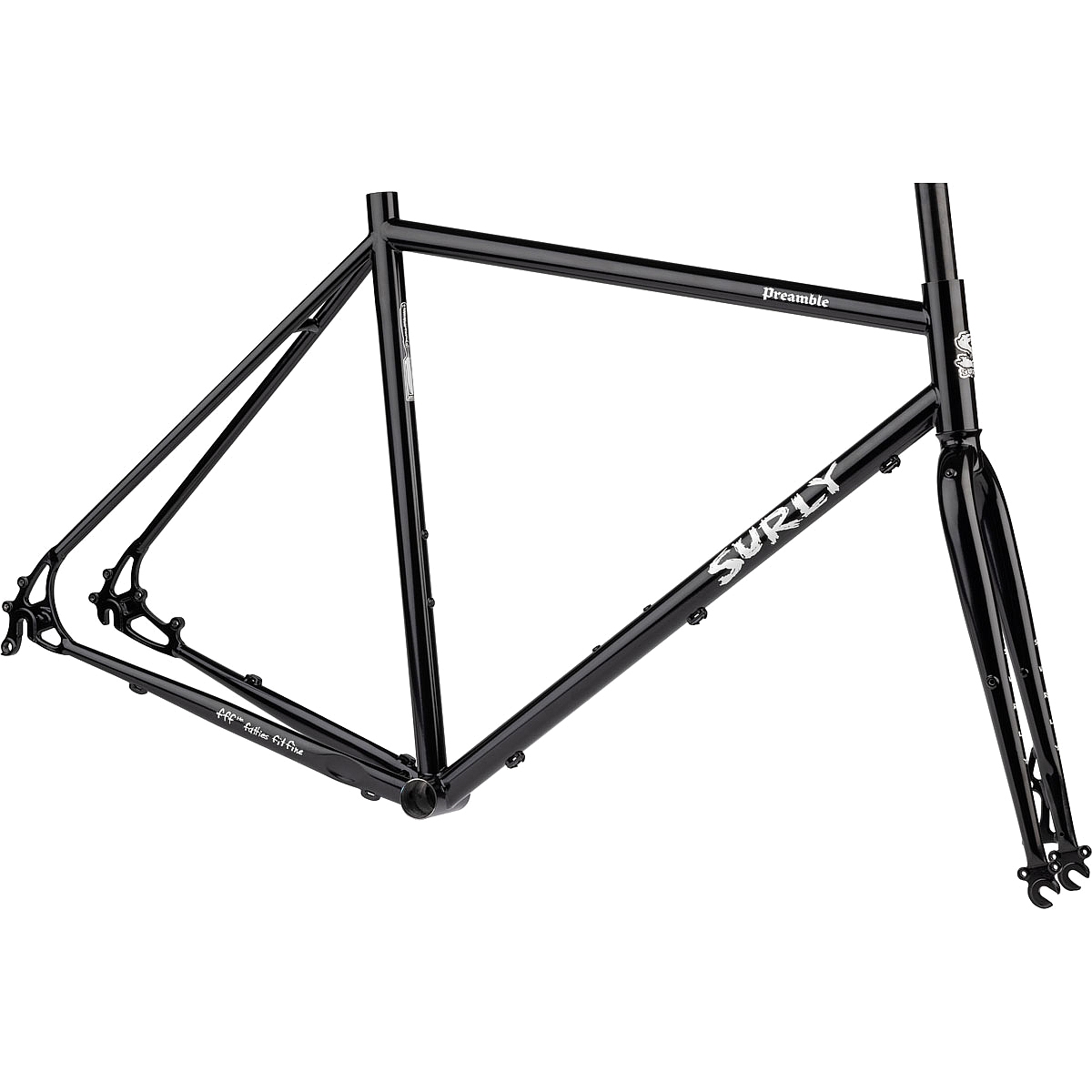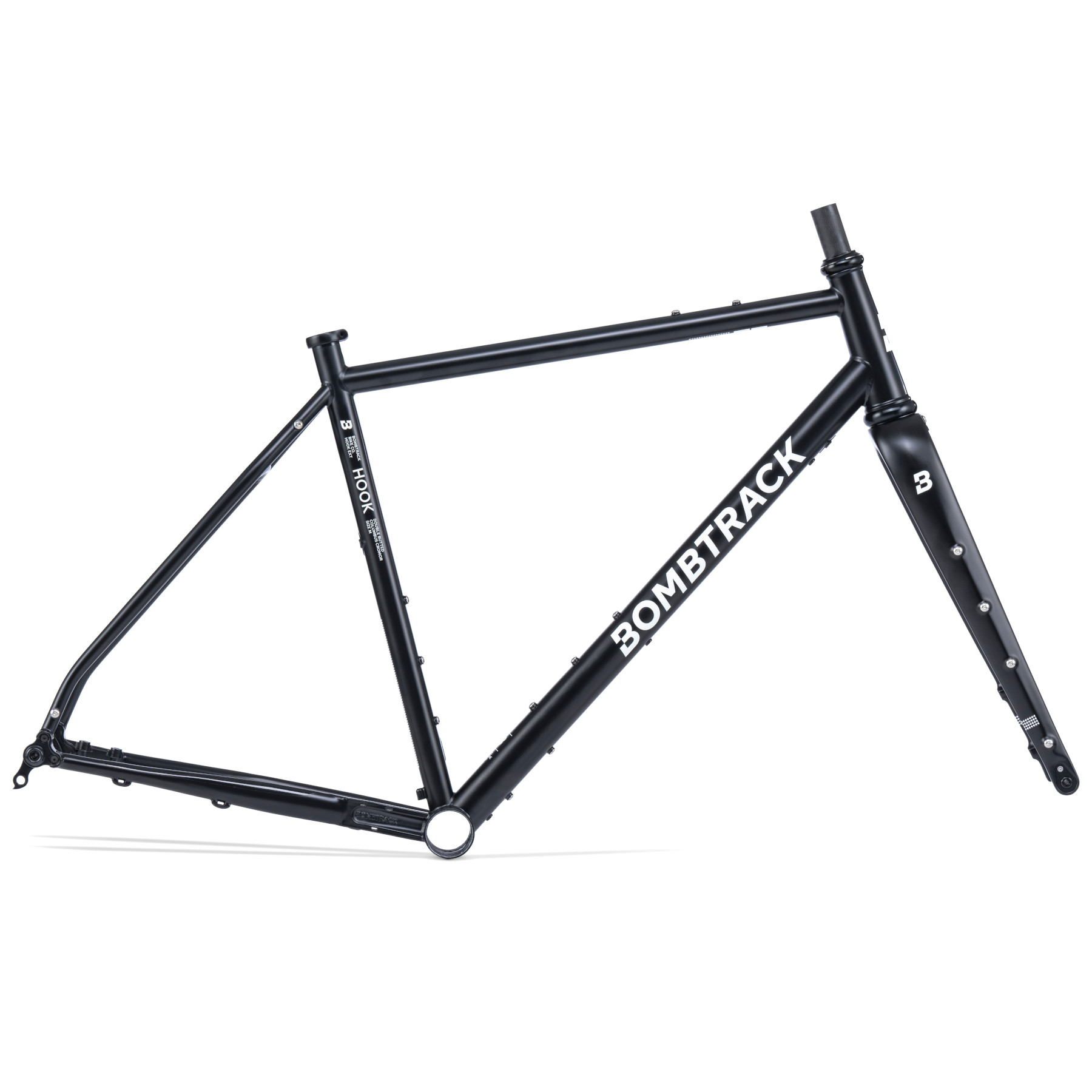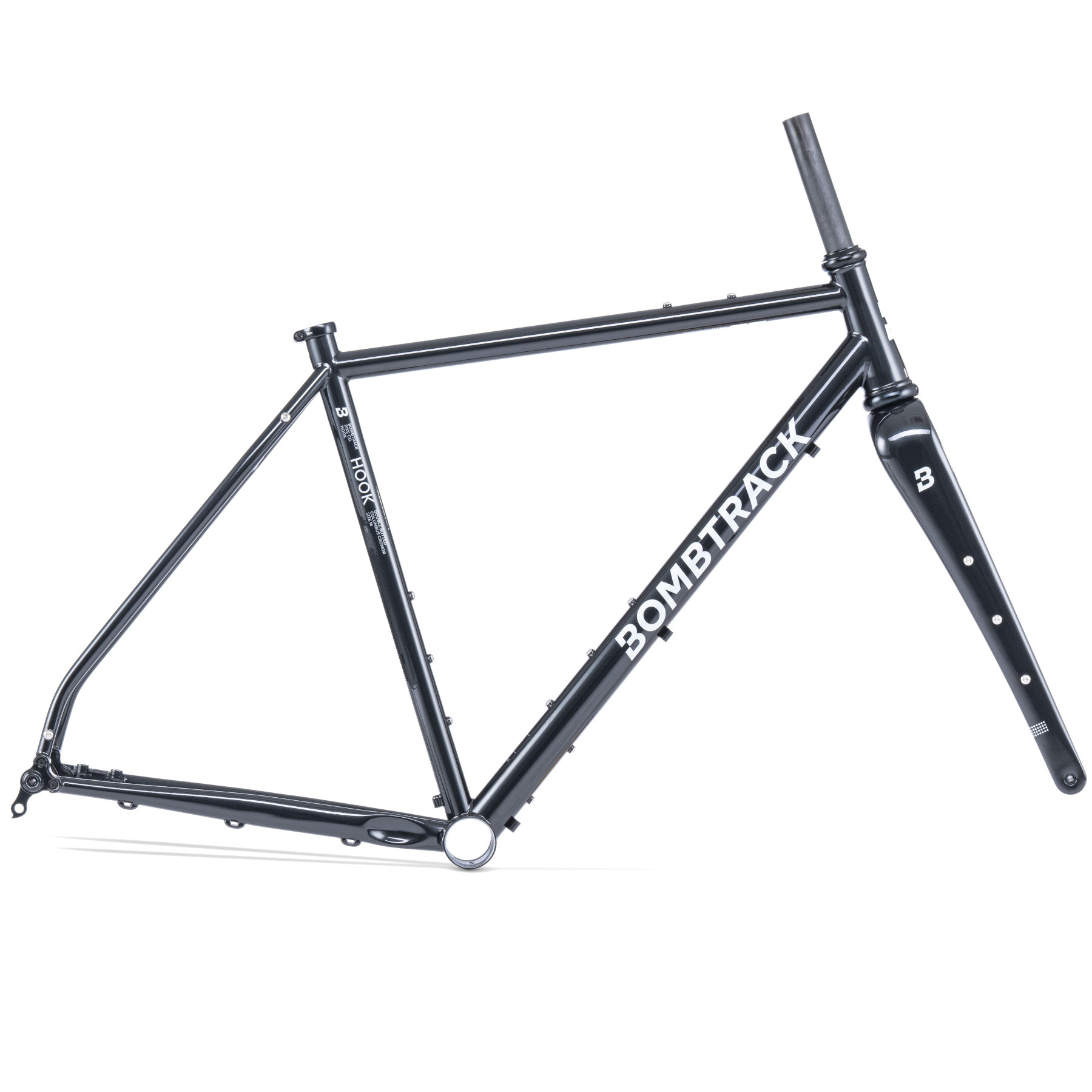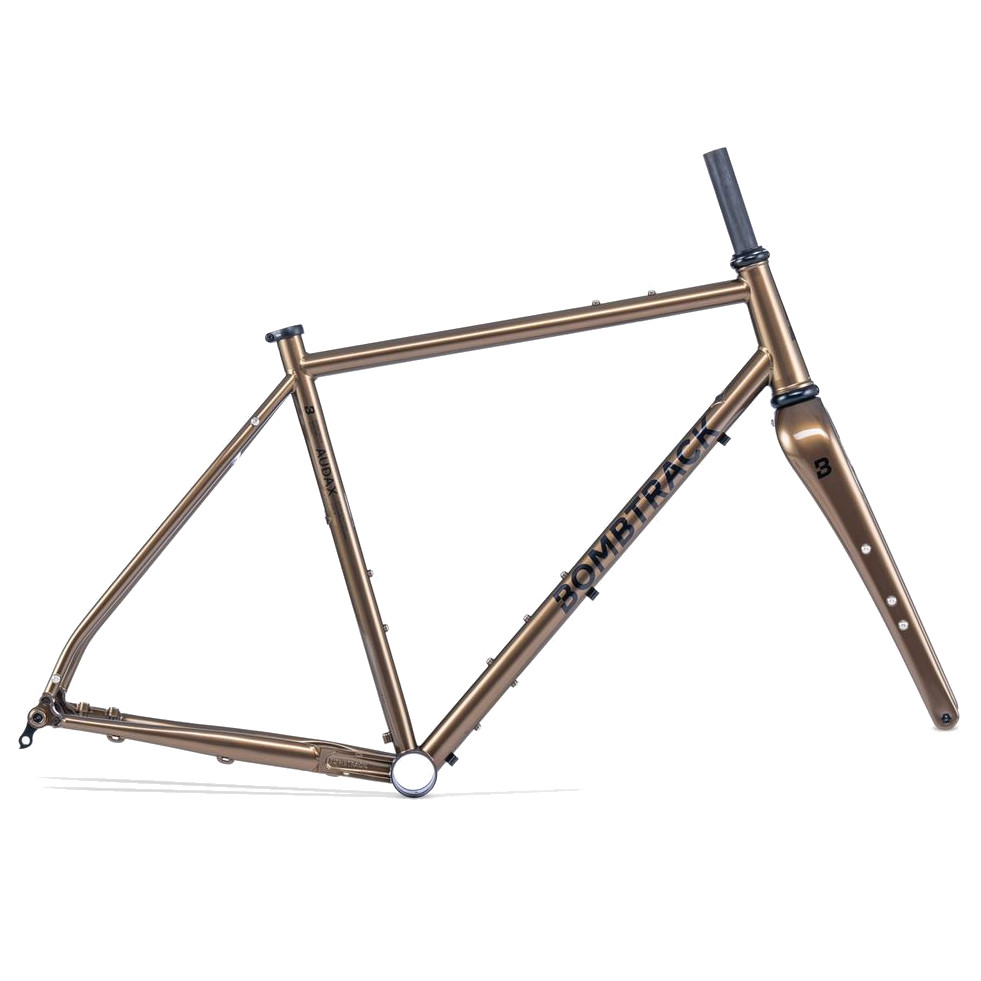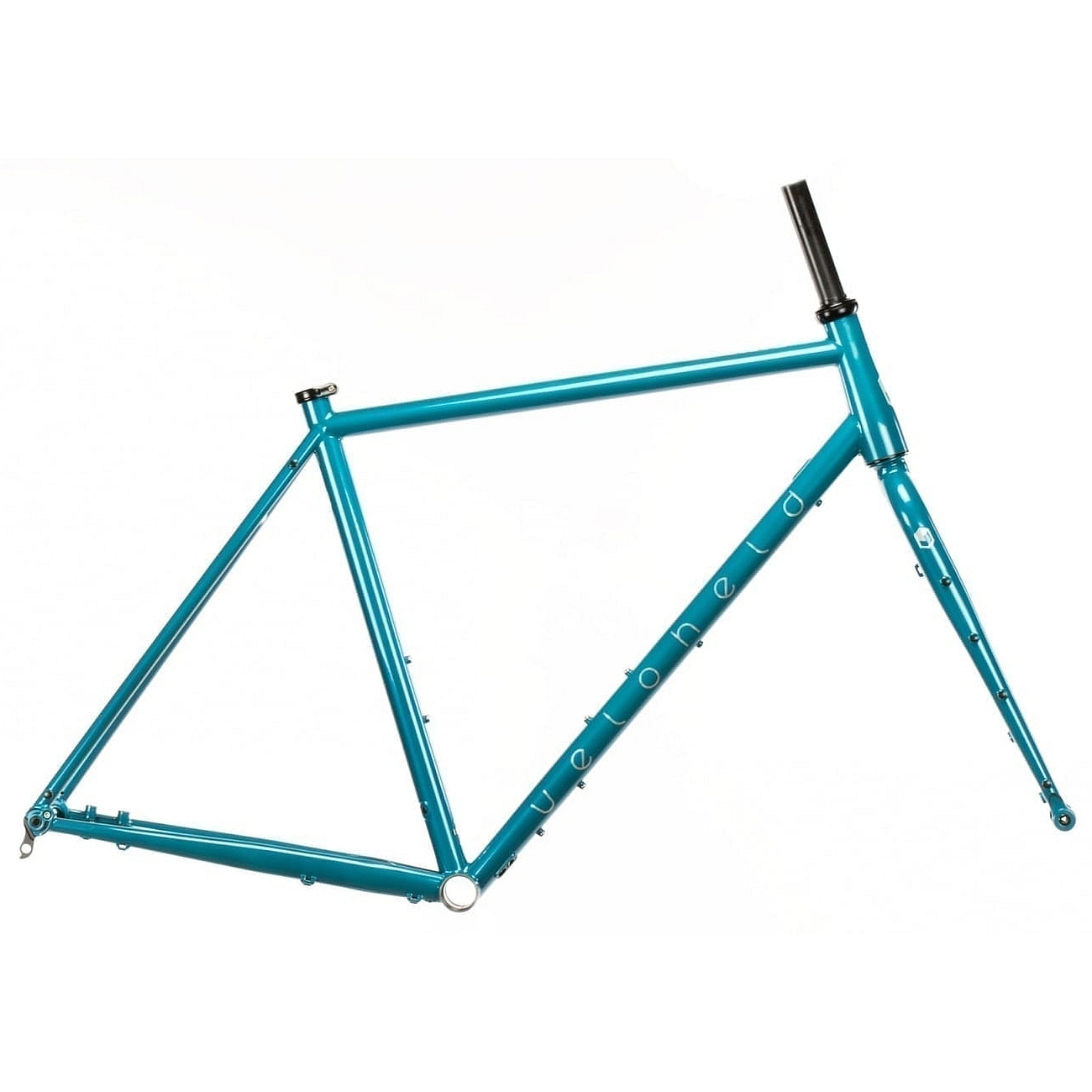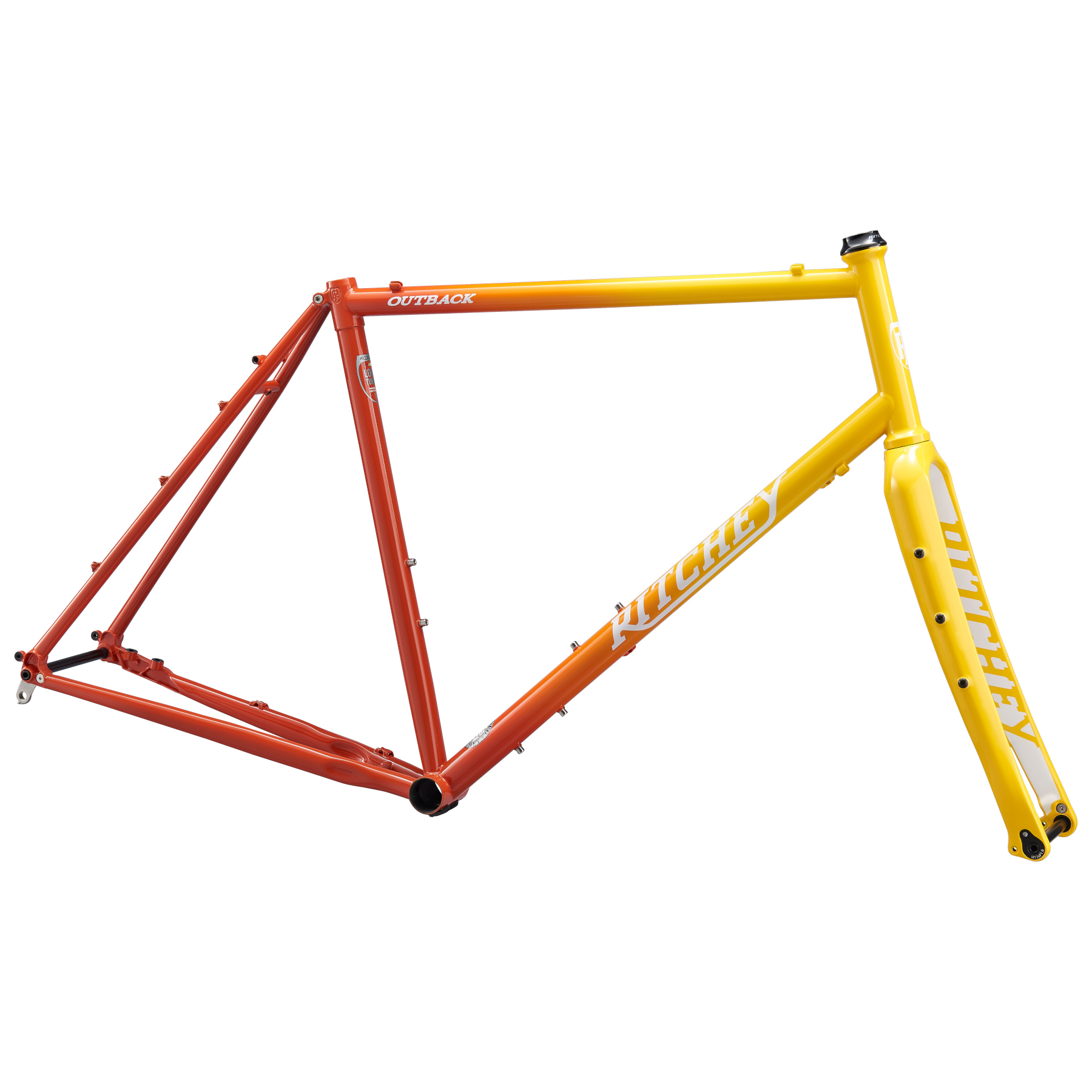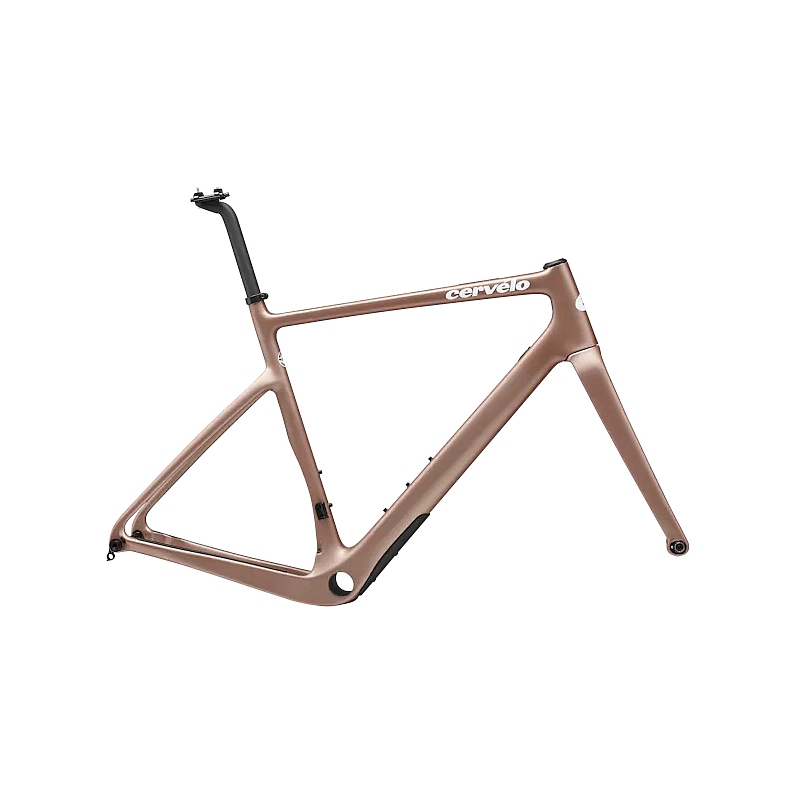Gravel Frames and Cyclocross Frames – The Foundation for Any Successful Off-Road Adventure
Fast as a road bikes and still ready for an off-road detour at any time – gravel bikes are now more popular than ever. And cyclocross bikes, which have been established for many decades, are also experiencing a new surge of popularity in the slipstream of modern off-road racers. But what actually sets gravel bikes and cyclocross bikes apart? And what are the differences between them and a classic road bike? On this page we give you the complete background on gravel bikes and cyclocross bikes. We also show you how to find the perfect gravel or cyclocross frame for you. Read more
Cyclocross and Gravel Bikes – How It All Began
Road bikes for off-road cycling – even if the entire cycling world seems to be talking about the increasing popularity of gravel bikes today, the history of off-road cycling actually goes back much further. Cyclists started to train off-road as early as the beginning of the 20th century. On the one hand, this gave cyclists a bit of variety, but on the other hand it also increased their fiwheetness, strengthened other muscle groups and provided some fun in often monotonous winter training. It didn't take long for the first races to emerge from this idea. The first documented cyclo-cross race took place on 10 January 1903, when bikes and bicycle frames optimised for this type of application were still not available. Nevertheless, it took almost half a century before the first Cyclo-cross World Championships were held in Paris in 1950. In the following decades, cyclocross, as cross-country cycling is called, continued to develop into a discipline to be taken seriously – a discipline that still provides exciting racing action in winter today. The best professional CX riders today enjoy a similar level of popularity as professional road racers, particularly in Belgium and the Netherlands.
Gravel cycling, on the other hand, is much younger than cyclocross. The ‘gravelling’ trend originally comes from America. ‘Gravel’ referred to the many sandy and scree-covered roads that characterise the vast landscapes of the USA, for example in areas such as Colorado or Utah. Too bumpy for a road bike but not challenging enough for a mountain bike – these are exactly the roads that form the traditional terrain for gravel racers. The US manufacturer Salsa really made the gravel trickle in 2012 with the presentation of a bike with tuned bike parts such as a special gravel bike frame. Even if the path network in Europe is somewhat different, the bikes’ versatility quickly earned them a growing fan base. While the first gravel bikes were still niche products a few years ago, now they are an integral part of any well-stocked range. Almost every manufacturer has at least one ‘adventure road bike’ on offer, although the designations may vary from ‘road plus’ to the ‘bikepacking bike’. The possible applications are just as varied: from a relaxed after-work ride to an extensive weekend tour, everything is possible, no matter the terrain or surface.
But races are now also being held on gravel bikes: like cyclocross races, gravel competitions take place on off-road terrain. However, there are several differences: gravel competitions are usually much longer and often cover distances of several hundred kilometres. Cyclocross competitions, on the other hand, are usually limited to one hour. In addition, the terrain in cyclocross races is usually much more difficult and muddy, while gravel races can often be held on fast sandy roads and sometimes on asphalt. Cyclocross circuits are usually ‘built’, while gravel circuits lead from A to B similarly to road riding. The sport of cyclocross is also heavily regulated by the UCI (Union Cycliste Internationale), while gravel riding is still relatively unregulated as a sport. The regulations are determined by the respective race organisers.
Gravel vs. Cyclocross – The Different Requirements at a Glance
|
Gravel |
Cyclocross |
|
|
Gravel Bikes and Cyclocross Bikes – The Technical Differences
But cyclocross and gravel biking differ not only in terms of racing and their range of applications, but also in terms of their technical requirements. While a cyclocross bike frames with its aggressive geometry and minimalist equipment – similar to a road bike frame – is primarily designed for ambitious sporty routes, speed or even competitive sports, a gravel bike is above all a comfortable all-rounder. It’s a bike for fun outings on any occasion. This even applies to gravel race bikes, which are significantly more comfortable than cyclocross bikes despite their sporty aims due to the much longer distances covered on gravel rides.
At first glance, however, gravel bikes and cyclocross bikes seem confusingly similar. Both have the classic road bike look with road handlebars; both roll along the terrain on studded tires. Nevertheless, there are small but subtle differences due to their respective requirements discussed above. There are five areas in particular: the frame geometry and shape, the tire clearance, the frame material, the mounting options for accessories incorporated into the frame, and the equipment in terms of components.
Gravel Frames and Cyclocross Frames Compared
These differences between gravel bikes and cyclocross bikes are particularly evident in their frames. Due to the different requirements in the respective disciplines, gravel bike frames and cyclocross frames have different designs and technical refinements. This is evident from the frame geometry: at first glance, neither gravel nor cyclocross frames differ much from the classic road bike frame. The typical steering angle on gravel and cyclocross bikes is usually 73 to 74 degrees. The seat angle is also usually 73 to 74 degrees. As a rule, the shorter the top tube, the more upright and comfortable the rider will be.
Gravel Frames Have a Longer Wheelbase, Cyclocross Frames Have a Higher Bottom Bracket
One of the differences in the geometry of gravel frames and cyclocross frames is the longer wheelbase on gravel bikes, which is intended to provide more stability off-road. Cyclocross bikes, on the other hand, have a shorter wheelbase, which gives them more manoeuvrability on tight corners. Especially on the often sharply-angled cyclocross race tracks, this advantage is not to be sneezed at. Another typical feature of gravel bikes is the lower bottom bracket. Together with the longer wheelbase, it provides a lower centre of gravity, which also increases stability and smoothness when cycling. Cyclocross bicycles usually have a higher bottom bracket. That’s because in cyclocross racing, you occasionally have to jump over obstacles – a higher bottom bracket, combined with a greater distance to the ground, helps.
Another difference between gravel bikes and cyclocross bikes in terms of frame geometry is the frame shape: cyclocross frames are usually constructed with a large, open frame triangle with a straight top tube, so you can easily shoulder and carry them over obstacles in cyclocross races. With gravel bikes, on the other hand, the bike companies usually allow themselves more creative freedom in terms of design and frame shape.
Gravel Frames Have More Tire Clearance than CX Framesets
Cyclocross frames also need to be stable off-road, but they differ from gravel frames in one other crucial way: tire clearance. According to the official UCI regulations, the tire width in cyclocross is limited to 33 millimetres. The typical tire width for cyclocross bikes is therefore usually between a sporty 32 and 35 millimetres ex works. The tire clearance on cyclocross frames is thus usually significantly lower than on today's gravel bikes, on which are often mounted 45 to 50 millimetre thick or even wider tires. There is a good reason for this difference: the wide tires give gravel bikes more traction and make them more comfortable on uneven roads and trails. Even on a gravel bike loaded with bikepacking bags, larger-volume tires have a positive impact on handling. A cyclocross bike, on the other hand, is a pure sports machine and is almost always ridden unloaded. Besides this, the tire width, which is specified in the UCI regulations due to the historical connection between cyclocross and road bikes, ensures consistent frame proportions.
Gravel Frames Have More Mounting Points than Cyclocross Frames
Another crucial difference between gravel bike frames and cyclocross frames is the mounting options for accessories. While some cyclocross bikes have brackets for extra water bottles, mudguards and pannier racks, most cyclocross bikes only have room for one or two water bottles. And that’s simply because you don't need panniers for cyclocross racing. Instead, the bikes should be as light as possible. The situation is completely different for gravel bikes. Here, mountings for accessories such as a third or even fourth drinks bottle, screw-on bikepacking bags, mudguards and pannier racks are part of the standard equipment, so there is room for all the equipment you need for your next off-road adventure.
Gravel Frames vs. Cyclocross Frames – The Differences at a Glance
| Gravel Frames | Cyclocross frames |
|
|
Purchase Decision – Do You Need a Gravel Frame or a Cyclocross Frame?
So it all comes down to the details when buying a new frame for off-road drop bar riding. Whether you need a gravel frame or a cyclocross frame depends entirely on your personal preferences. If you want to build a bike for long rides on varied terrain, then a gravel frame is probably the best choice for you. If, on the other hand, you are mainly interested in cyclocross racing or ambitious training in the forest and are looking for a light and fast bike, then a cyclocross frame is probably the better choice. At BIKE24 you will always find a wide range for both frame variants – from fast cyclocross carbon frames to comfortable gravel titanium frames. This will give you the foundation you need for your next off-road sporting adventure.
